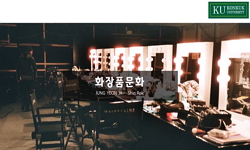Since the middle of the Edo period, Japan has developed publishing organizations that are responsible for publishing culture, and the product distribution economy has developed and the increase of popular readers including women begins to be seen. Esp...
http://chineseinput.net/에서 pinyin(병음)방식으로 중국어를 변환할 수 있습니다.
변환된 중국어를 복사하여 사용하시면 됩니다.
- 中文 을 입력하시려면 zhongwen을 입력하시고 space를누르시면됩니다.
- 北京 을 입력하시려면 beijing을 입력하시고 space를 누르시면 됩니다.

전근대 일본의 서적에 의한 광고 - 출판물과 상품 선전을 중심으로 = The Advertisement by Books in Premodern Japan : Focusing on Advertisement of a Publication and Goods
한글로보기부가정보
다국어 초록 (Multilingual Abstract)
In this way, this study focused on the commerciality and advertisement of books in the middle and late Edo period. The 18th and 19th centuries were the period when the market and capital were clearly under the development of the commodity distribution economy, and the literary works were also recognized as a product. The commercial and economic role of popular literature works in the 18th and 19th centuries was focused on advertisement that began to appear in classical literature works at that time. Also, the method of advertisement was visually examined through illustrations of popular books and records of the period.
It was published as a simple foundation, starting with the advertisement of the collection list, and only for the propaganda of goods and shops, so the commerciality of books became even higher. Also, as a way to gain popularity among the public, it promotes the works of popular artists at that time or promotes the vitality of popular artists. The method of indirect advertisement using illustrations of works and direct advertisement using signboards for publicity in front of bookstores were also found to be diverse.
Since the middle of the Edo period, Japan has developed publishing organizations that are responsible for publishing culture, and the product distribution economy has developed and the increase of popular readers including women begins to be seen. Especially, the marketability of books is important, and the method of writing, illustration, publishing year and publisher is not recorded in books. Advertisements such as collection lists, basic notices, new advertising, medicines, cosmetics, and stores will be published together.
In this way, this study focused on the commerciality and advertisement of books in the middle and late Edo period. The 18th and 19th centuries were the period when the market and capital were clearly under the development of the commodity distribution economy, and the literary works were also recognized as a product. The commercial and economic role of popular literature works in the 18th and 19th centuries was focused on advertisement that began to appear in classical literature works at that time. Also, the method of advertisement was visually examined through illustrations of popular books and records of the period.
It was published as a simple foundation, starting with the advertisement of the collection list, and only for the propaganda of goods and shops, so the commerciality of books became even higher. Also, as a way to gain popularity among the public, it promotes the works of popular artists at that time or promotes the vitality of popular artists. The method of indirect advertisement using illustrations of works and direct advertisement using signboards for publicity in front of bookstores were also found to be diverse.
국문 초록 (Abstract)
이처럼 본 연구에서는 에도시대 중, 후기의 작품들을 작가나 장르에 구애받지 않고 서적이 갖는 상품성과 광고에 주목하여 고찰하였다. 18~19세기는 상품 유통 경제가 발달하여 시장과 자본의 지배구조가 명백히 들어나기 시작한 시기로, 문학 작품 역시 하나의 상품으로 인식되기 시작하였다. 당시 고전 문학 작품에 등장하기 시작한 선전과 광고를 중심으로 18~19세기 대중 문학 작품의 상품성과 경제적 역할에 주목하여 그 특징과 변화 양상을 고찰하였다. 또한 당시 대중 서적의 삽화와 간기의 기록을 통하여 광고의 대상과 방식을 시각적으로도 살펴보았다.
17세기 후반부터 시작된 출판물의 광고는 19세기에 이르러 서적을 소비하는 독자층을 의식하기 시작하였다. 단순한 신간 예고, 소장본목록의 선전에서 시작하여 상품과 상점의 선전만을 위한 서적까지 출간하며 서적의 상품성은 더욱 높아졌다. 또한 대중들에게 흥미를 유발하기 위한 방법으로 당시의 인기 작가 작품을 함께 선전하거나 인기 작가의 약력 소개하고 신간 작품의 전체적 내용을 적기도 하였다. 또한 작품의 삽화를 이용한 간접 광고, 서점 앞의 홍보용 간판을 이용한 직접 광고 등, 그 방법 역시 다양하다.
일본은 에도시대 중, 후기부터 출판문화를 담당하는 출판기구의 발달, 상품유통 경제 발전, 여성을 포함한 대중 독자층의 증가가 뚜렷하게 보이기 시작한다. 특히 서적의 상품성이 중요시되...
일본은 에도시대 중, 후기부터 출판문화를 담당하는 출판기구의 발달, 상품유통 경제 발전, 여성을 포함한 대중 독자층의 증가가 뚜렷하게 보이기 시작한다. 특히 서적의 상품성이 중요시되며 서적에 작가, 삽화가, 출판 연도와 출판사만을 기록하던 방식에서 탈피하여, 신간 예고, 소장본목록, 약, 화장품과 같은 상품과 상점의 광고가 함께 실리게 된다.
이처럼 본 연구에서는 에도시대 중, 후기의 작품들을 작가나 장르에 구애받지 않고 서적이 갖는 상품성과 광고에 주목하여 고찰하였다. 18~19세기는 상품 유통 경제가 발달하여 시장과 자본의 지배구조가 명백히 들어나기 시작한 시기로, 문학 작품 역시 하나의 상품으로 인식되기 시작하였다. 당시 고전 문학 작품에 등장하기 시작한 선전과 광고를 중심으로 18~19세기 대중 문학 작품의 상품성과 경제적 역할에 주목하여 그 특징과 변화 양상을 고찰하였다. 또한 당시 대중 서적의 삽화와 간기의 기록을 통하여 광고의 대상과 방식을 시각적으로도 살펴보았다.
17세기 후반부터 시작된 출판물의 광고는 19세기에 이르러 서적을 소비하는 독자층을 의식하기 시작하였다. 단순한 신간 예고, 소장본목록의 선전에서 시작하여 상품과 상점의 선전만을 위한 서적까지 출간하며 서적의 상품성은 더욱 높아졌다. 또한 대중들에게 흥미를 유발하기 위한 방법으로 당시의 인기 작가 작품을 함께 선전하거나 인기 작가의 약력 소개하고 신간 작품의 전체적 내용을 적기도 하였다. 또한 작품의 삽화를 이용한 간접 광고, 서점 앞의 홍보용 간판을 이용한 직접 광고 등, 그 방법 역시 다양하다.
참고문헌 (Reference)
1 최태화, "일본 근세 광고문학과 슌스이닌조본에 보이는 광고의 역할" 한국일본언어문화학회 (25) : 693-711, 2013
2 김학순, "에도시대 상업서적 문화와 서적중개상 ―가시혼야(貸本屋)에 의한 가시혼(貸本)의 생산, 유통, 소비―" 한국일본문화학회 (81) : 149-166, 2019
3 内田保廣, "近世説美少年録上" 国書刊行会 1993
4 이윤석, "江?時代の貸本屋について" 한국일본학회 67 : 213-226, 2006
5 김미진, "江戸時代の戯作者の広告文 -柳亭種彦を中心に-" 한국일본어문학회 1 (1): 215-236, 2018
6 長友千代治, "江戸時代の図書流通" 仏教大学 2002
7 浅埜晴子, "戯作者と広告-式亭三馬店を例にして" 中央大学 47 : 2004
8 鈴木俊幸, "店頭の書籍広告-「看板」小考-" 中央大学文学部 (103) : 2009
9 佐藤深雪, "山東京伝集" 国書刊行会 1987
10 横山邦治, "小枝繁集" 国書刊行会 1997
1 최태화, "일본 근세 광고문학과 슌스이닌조본에 보이는 광고의 역할" 한국일본언어문화학회 (25) : 693-711, 2013
2 김학순, "에도시대 상업서적 문화와 서적중개상 ―가시혼야(貸本屋)에 의한 가시혼(貸本)의 생산, 유통, 소비―" 한국일본문화학회 (81) : 149-166, 2019
3 内田保廣, "近世説美少年録上" 国書刊行会 1993
4 이윤석, "江?時代の貸本屋について" 한국일본학회 67 : 213-226, 2006
5 김미진, "江戸時代の戯作者の広告文 -柳亭種彦を中心に-" 한국일본어문학회 1 (1): 215-236, 2018
6 長友千代治, "江戸時代の図書流通" 仏教大学 2002
7 浅埜晴子, "戯作者と広告-式亭三馬店を例にして" 中央大学 47 : 2004
8 鈴木俊幸, "店頭の書籍広告-「看板」小考-" 中央大学文学部 (103) : 2009
9 佐藤深雪, "山東京伝集" 国書刊行会 1987
10 横山邦治, "小枝繁集" 国書刊行会 1997
11 今田洋三, "商売繁盛 江戸文学と稼業" 臨川書店 1999
12 高木元, "中本型読本集" 国書刊行会 1988
동일학술지(권/호) 다른 논문
-
국기(國旗) 제정과정에서 나타나는 식민지 인도의 국가 정체성 형성과정에 대한 고찰 1905-1947
- 가천대학교 아시아문화연구소
- 신민하
- 2019
- KCI등재
-
한류, 수용에서 합작으로 - 중국 TV 예능 프로그램 사례 검토
- 가천대학교 아시아문화연구소
- 장치
- 2019
- KCI등재
-
- 가천대학교 아시아문화연구소
- 신승희
- 2019
- KCI등재
-
20세기 전반 인도의 정치적 변동과 달리뜨 정체성의 형성 - 힌두 정체성의 강화와 그에 대한 대응
- 가천대학교 아시아문화연구소
- 이지은
- 2019
- KCI등재
분석정보
인용정보 인용지수 설명보기
학술지 이력
| 연월일 | 이력구분 | 이력상세 | 등재구분 |
|---|---|---|---|
| 2028 | 평가예정 | 재인증평가 신청대상 (재인증) | |
| 2022-01-01 | 평가 | 등재학술지 유지 (재인증) |  |
| 2019-04-16 | 학회명변경 | 영문명 : Institute of Asian Culture Studies -> Asian Cultural Studies Research Institute |  |
| 2019-01-01 | 평가 | 등재학술지 유지 (계속평가) |  |
| 2016-01-01 | 평가 | 등재학술지 선정 (계속평가) |  |
| 2015-12-01 | 평가 | 등재후보로 하락 (기타) |  |
| 2011-01-01 | 평가 | 등재학술지 선정 (등재후보2차) |  |
| 2010-01-01 | 평가 | 등재후보 1차 PASS (등재후보1차) |  |
| 2008-01-01 | 평가 | 등재후보학술지 선정 (신규평가) |  |
학술지 인용정보
| 기준연도 | WOS-KCI 통합IF(2년) | KCIF(2년) | KCIF(3년) |
|---|---|---|---|
| 2016 | 0.55 | 0.55 | 0.55 |
| KCIF(4년) | KCIF(5년) | 중심성지수(3년) | 즉시성지수 |
| 0.58 | 0.56 | 0.974 | 0.07 |




 KCI
KCI DBpia
DBpia






